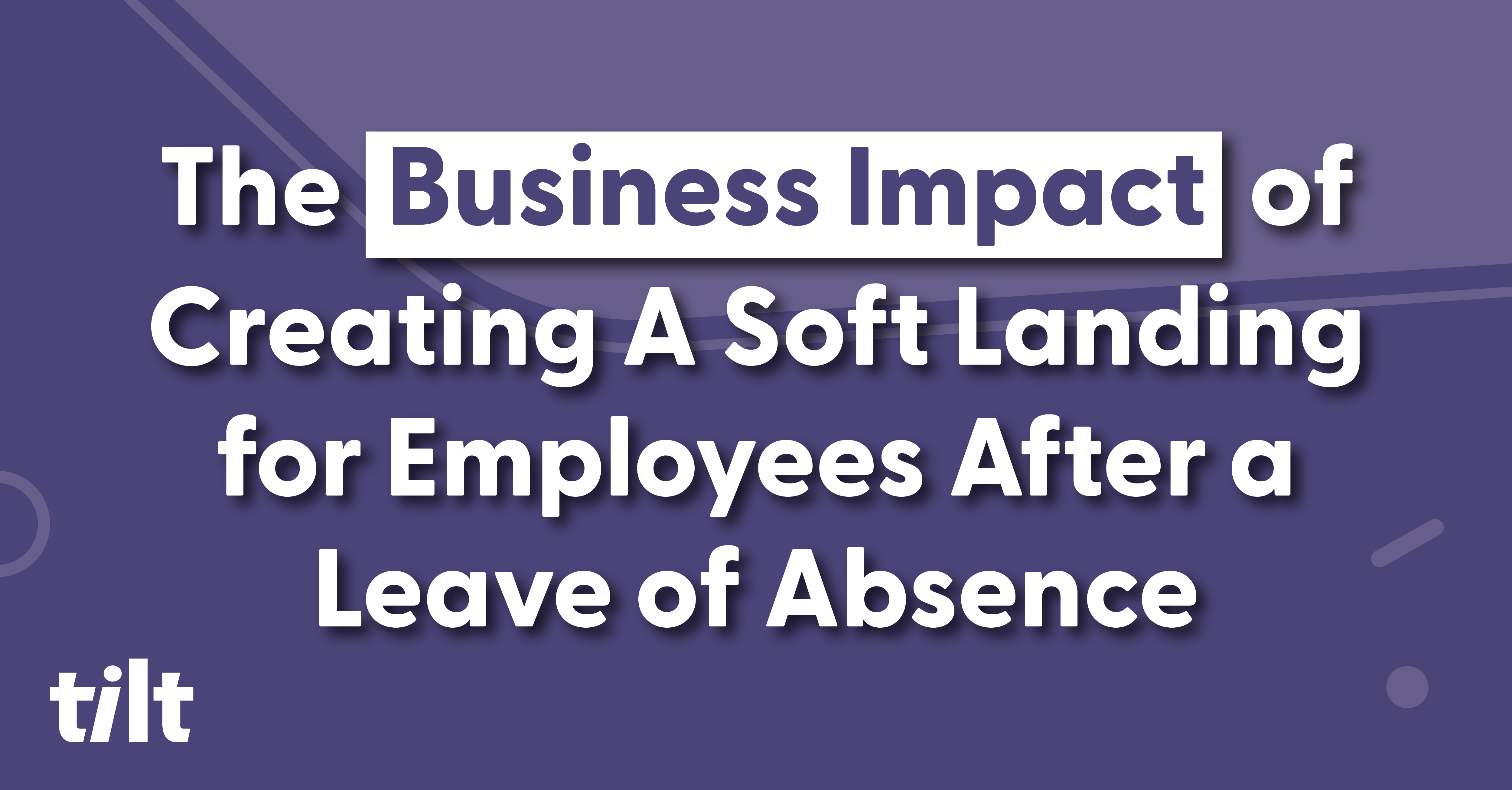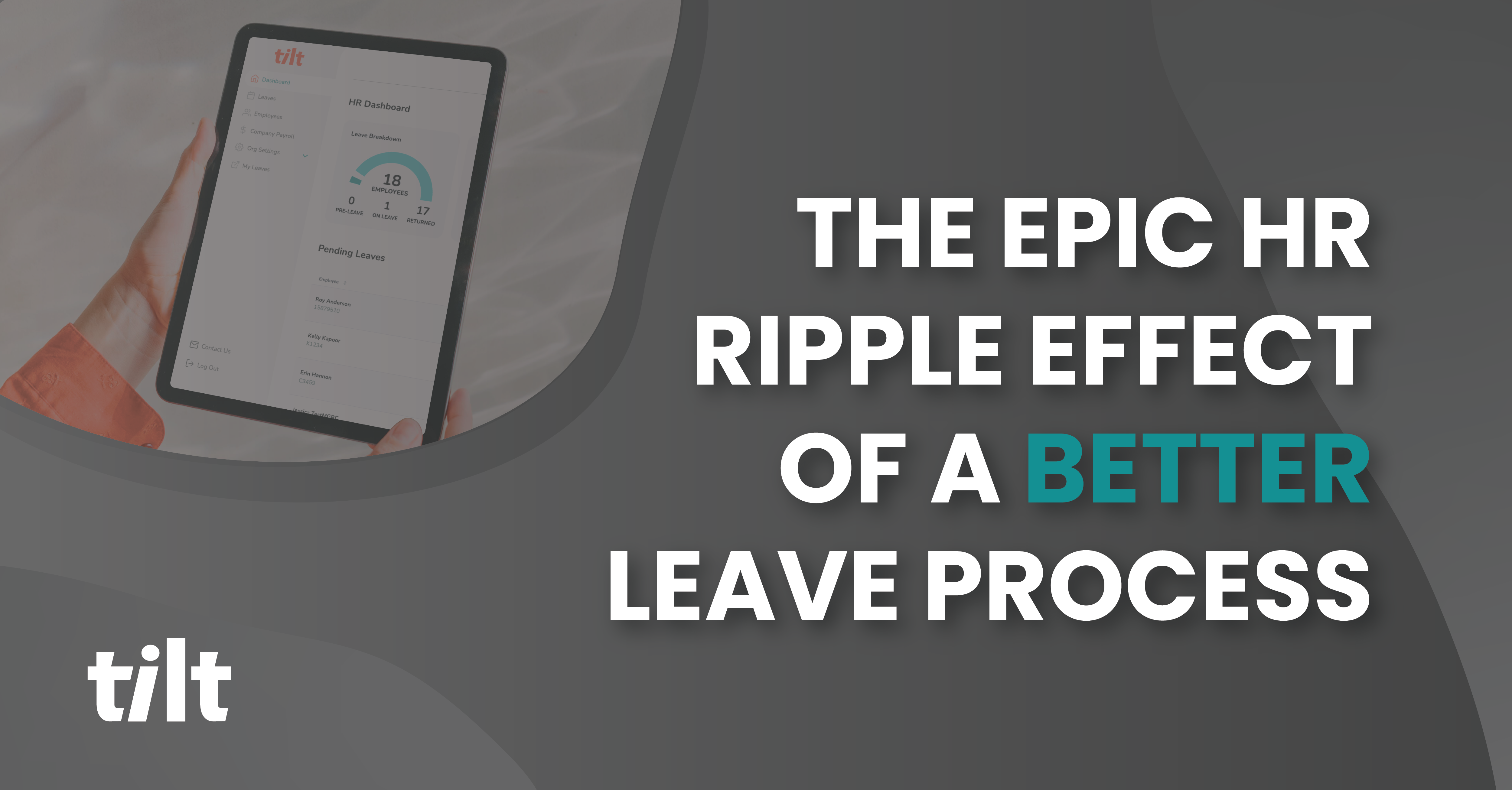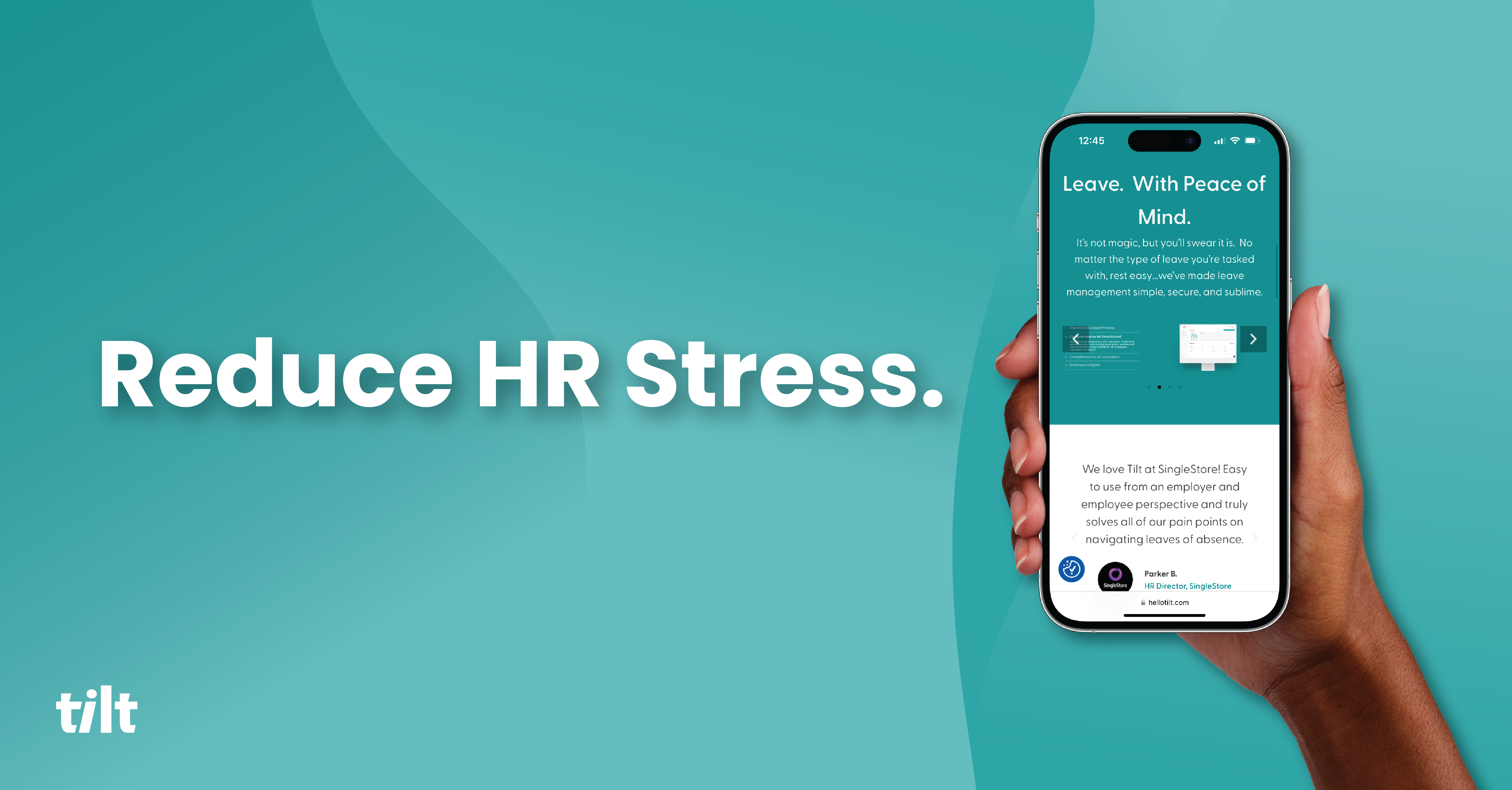If you’ve ever uttered the phrase, “I need a vacation from my vacation,” then you know how daunting it can be to transition back to work after an extended absence.
Of course, going from galavanting across Europe to being back in the office is one thing, it’s quite another to have taken time to welcome a new human into your life, or to mourn the loss of one you thought would be there forever.
Whether the reason is joyous, heartbreaking, or anything in between, a leave of absence is no walk in the park to experience as an employee. So much so that the significance of getting leave right as an employer and ensuring that the employee is put in a position to succeed when they return can’t be overstated.
This responsibility often rests on People Ops, who must deliver a positive leave journey for their employee population from the moment the leave is requested through re-boarding. With the right approach, you can help ensure your people are gently reintegrated into their workflow, and avoid the potentially costly ramifications caused by getting it wrong.
Why a Positive Leave of Absence Return Matters
Sticking the leave of absence landing can have tremendous benefits to your business. Establishing an empathetic and repeatable approach for employees returning to work after a leave of absence demonstrates a level of humanity that’s no longer a nice-to-have in the workplace, but a requirement to ensure that workers are treated like humans, especially in their time of need.
Alyssa Bani, Principal of the Consulting practice at Exaqueo, paints a picture of what it was like for her to return from maternity leave and what was going through her mind as she did:
Last fall I gave birth to a beautiful baby boy and recently returned to paid work after maternity leave. Coming back to work was an incredibly emotional experience for many reasons.
The end of maternity leave meant the end of our days together, just the two of us with nowhere to be and no set agenda. It was the return to professional fulfillment and the structure that I was ready for. I am privileged and grateful to have access to childcare, but find myself hoping I don’t miss his milestones while he’s in the care of someone else.
I’m constantly prioritizing and reprioritizing in an effort to do it all. Returning to work is a transition that I’m still navigating every day. ‘Working mom’ is a new identity I’m discovering, settling into, and loving just a few months in.
Alyssa’s feelings are certainly her own, but they are far from uncommon. Developing a return-to-work plan that welcomes employees coming back from leave can make or break their experience, and be the difference between an employee returning feeling engaged and supported, and one looking to move companies at the first opportunity.
The Benefits of Sticking the Leave of Absence Landing
Turnover aside, there are other impacts to your business that merit a stronger focus on a smooth transition back into the workplace for employees taking a leave.
Let’s take a look at some of the reasons why empathetic leave support, from start to finish, matters to your business:
Boosted Morale and Productivity: Providing a soft, supported landing during an employee’s return period can positively impact the employee’s morale and the morale of the organization (more on that below). Similarly, by easing the transition back to work, employees are more likely to quickly re-engage with their tasks and responsibilities, leading to increased productivity.
Unsurprisingly, research shows that when morale is low, productivity is low, which can have a direct negative impact on profit.
Knowledge Retention: Facilitating a smooth return allows the employee to quickly catch up on any changes or developments in their absence, reducing the risk of knowledge gaps or disruptions in workflows.
Along those same lines, it’s a lot easier to retain knowledge within your organization if your employees aren’t looking for the exit because their leave of absence reintegration was an afterthought.
Flexibility and Enhanced Well-being: Organizations that provide a soft landing demonstrate flexibility and adaptability, crucial qualities in today’s dynamic business environment. Demonstrating that you care for your employees by offering flexible schedules can help address potential stress or anxiety your employees may be feeling around returning to work.
Positive Company Culture: A company that values and supports its employees during challenging times fosters a positive and caring culture, which can attract and retain top talent.
Here’s what Alyssa had to say about her company after a supported return to work:
I’m grateful to be a part of an organization that supported my return by preparing me with what to expect during the first few days and weeks and gave me the flexibility to figure out my new routine. My wonderful colleagues welcomed me back and helped me get back up to speed so I could confidently re-engage with my clients.
Positive Employer Branding: Demonstrating a commitment to employee well-being and work-life balance contributes to positive employer branding, making your organization more attractive to potential hires. Would Alyssa have written those glowing words about her organization if she hadn’t been shown so much love?
Cost Savings: While everything listed above gives us warm and fuzzy feelings, at the end of the day it’s a financial boon as well. By giving attention to an employee returning to work your organization can avoid the costs associated with turnover such as recruiting, hiring, and training new employees.
Creating a Soft Landing For Employees After Leave
Okay great, we now know that a soft landing after a leave of absence is both the human thing to do and a boost for your business, so what are some things you can implement at your organization to start?
Dedicated Leave of Absence Support: Even though every People Ops team out there would love to have the bandwidth to move mountains for every employee on a leave, that may not be realistic for you. If that’s your situation, a dedicated leave of absence solution may be your best bet to provide a seamless leave of absence experience from start to finish, though you should still have some “welcome back” plan in place regardless.
Welcome Them Back: A warm welcome back should include a warm “welcome back!” Work with their manager to give the returning employee a personal token of gratitude. It could be a gift card to somewhere they like, or even just a signed card from their team.
Either way, providing a warm welcome back lets them know that they’re valued, and can be a nice pick-me-up when they may be feeling anxiety otherwise.
Return-to-Work Reorientation: Similar to the onboarding process for new hires, it’s important to have a structured approach for welcoming employees returning from leave. Utilize “In Case You Missed It” (ICYMI) documents to provide a comprehensive overview upon their return.
This allows them to absorb the information at their own pace and ask questions as necessary. This also ensures a thoughtful reintroduction to their team rather than overwhelming them with a barrage of information right away.
Offer Flexible Schedule Options: Whether adopting a compressed work week, a permanent part-time schedule, or a temporary adjustment upon returning to work, deviating from the conventional 9-5 framework or exploring other innovative arrangements empowers employees to craft a schedule that aligns with their life. This flexibility ensures they can fulfill their job responsibilities while maintaining accountability.
Create Employee Resource Groups and/or Encourage Them to Join: Developing Employee Resource Groups (ERGs) can be an amazing refuge for employees returning from leave and trying to navigate their new life.
A “working parents” ERG for new parents (or any parent), for example, can give employees a safe space while they’re at work in an environment filled with colleagues who can empathize with their situation or provide them with resources to help if needed.
Better Leaves for Better Business
A commitment to providing a better leave of absence experience for your employees is a commitment to your organization’s foundation. It’s a demonstration that as an employer you recognize the efforts they put forth on a daily basis, and that you’re willing to reciprocate those efforts when an employee needs to step away for a length of time to take care of life.
“We all need support from time to time, through both the good and the inevitable bad times,” says Tilt COO, and mom x 4, Kait Feeney. “A well-executed leave plan supports the person and the business. Balancing humanness with operational realities can ensure success for all the people impacted by a leave of absence.”
About Tilt
Tilt is leading the charge in all things leave of absence management through easy-to-use tech and human touch. Since 2017, our proprietary platform and Empathy Warriors have been helping customers make leave not suck by eliminating administrative burdens, keeping companies compliant, and providing a truly positive and supportive leave of absence experience for their people.







